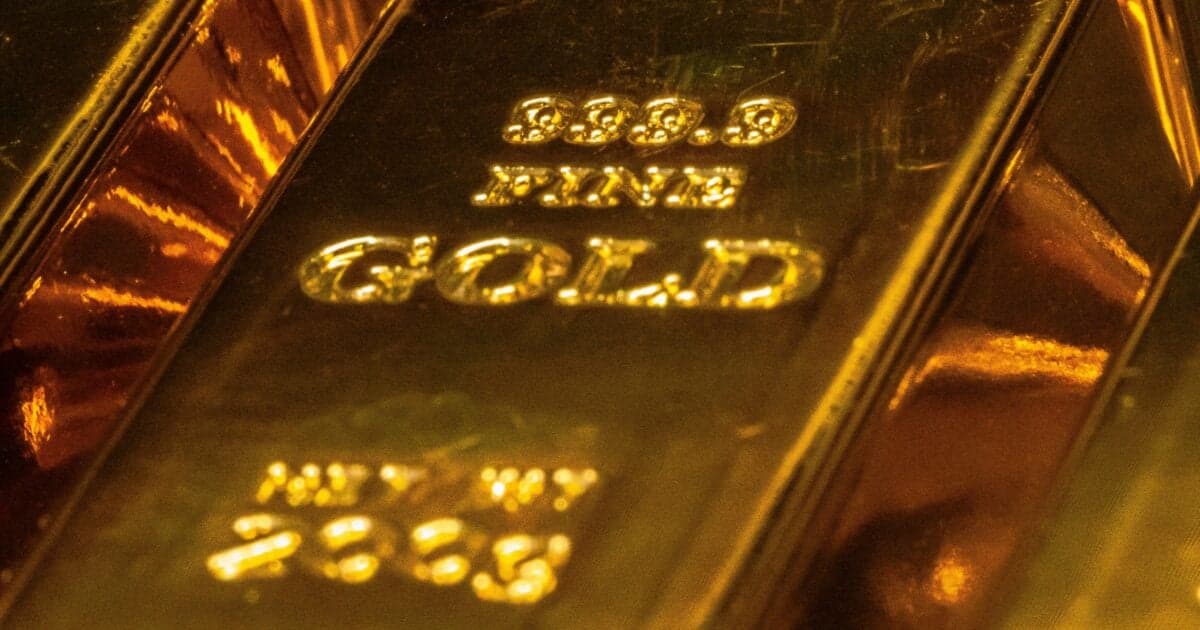Why Gold Is Surging 40% in 2025 Amid Rising Inflation


Higher inflation is coming... and gold is already flashing the warning.
The precious yellow metal has surged 40% this year, currently trading around $3,670 per ounce. It is setting one record high after another.
There's good reason for gold's rise. It stands apart from politics and credit. It can't be printed. It can't be defaulted on. And when governments start to lose credibility, gold becomes the store of value the smart money runs to.
That's exactly what's happening now...
U.S. Deficits, Rate Cuts, and the Inflationary Pressure on the Dollar
U.S. deficits are out of control. We're talking about a $1.9 trillion per year shortfall and rising.
The biggest annual budget items are locked in place: $1.7 trillion for Medicaid and Medicare, $1.5 trillion for Social Security, $927 billion for war, and over $1 trillion to pay the interest on the debt.
Last Wednesday, Federal Reserve Chair Jerome Powell cut the Fed funds rate by 25 basis points – down to a range from 4% to 4.25%. It was the Fed's first rate cut in nine months. And it's easy to see why.
There's nowhere else to cut...
It's obvious the political class will not make any real cuts to Medicaid and Medicare, Social Security, or the War Department's budget. The failure of the modest goals of the Department of Government Efficiency ("DOGE") before it ever really got started... proves there's no political will.
That means no cuts will be made in terms of any of the big expenditures that matter in terms of getting government spending under control. So the deficit will grow.
But as the saying goes, "there's no free lunch." The pressure has to be released somewhere, and the escape valve is the U.S. dollar.
That's why Powell cut interest rates into an inflationary environment... He had no choice.
The only palatable solution at this point is to cut federal interest payments and to stimulate the economy so tax receipts rise and the deficit narrows.
The timing couldn't be worse.
The Fed's latest rate cut comes as the consumer price index ("CPI") spiked to 2.9% in August. That's up from 2.5% a year ago, and up above the Fed's 2% target. The CPI has risen every month since bottoming in April at 2.3%.
Core inflation – which excludes volatile food and energy prices – has been running even hotter for the past few months, at 3.1%.
Why the Dollar Is Failing as a Long-Term Store of Value
Money has three primary purposes: being a medium of exchange, a unit of account, and a store of value.
The dollar still works fine for the first two. You can spend it anywhere and know exactly what the price means.
Bust as a store of value? Inflation eats away at it every year. Think of the dollar – and other fiat currencies – as a bucket with a hole in it. The more money and debt created, the faster it leaks.
It's why most people are better off holding investments like stocks, real estate, and gold over the long term rather than cash.
Uncoincidentally, the average gold price was $40.80 per ounce in 1971. Since then, the U.S. national debt has grown 94-fold. Multiply $40.80 by 94 times, and you get $3,835 per ounce.
It's not an exact science. Gold is volatile and subject to extreme price swings.
But the point still holds... The price of gold is heavily influenced by debt creation.
With U.S. government spending out of control, many countries are moving their financial reserves out of the dollar and into gold.
Central Banks Shift Reserves
According to 2024 data, the U.S. dollar makes up 46% of global reserves – down from around 55% a decade ago. Gold has now surpassed the euro and comprises 20% of global reserves – trailing only the dollar.
For the first time since 1996, foreign central banks are holding more gold than U.S. Treasurys. And that's not by accident.
As the U.S. fiscal problem becomes more acute, we expect central banks' gold holdings to trend higher.
Central banks are navigating massive government debt, a global trade war, monetary expansion, inflation, and geopolitical conflicts.
It's no wonder, central banks have been net gold purchasers for the past 15 years in a row. And they're buying a lot more lately...
Central banks loaded up on more than 1,000 metric tons of the metal in each of the past three years. And the trend will continue.
In the first half of 2025 alone, central banks added another 415 metric tons of gold. That's slightly behind last year's pace. But it shows central banks' willingness to buy gold even at higher prices.
Poland, Azerbaijan, Kazakhstan, China, and Turkey have been the largest purchasers in 2025 so far.
Central banks are long-term holders. Their purchases reduce the supply of gold available in the market and keep steady pressure on prices.
Some – including China, India, and Russia – are also increasing gold reserves to reduce reliance on U.S. dollar assets, especially as with their concern about government weaponization.
Investors Want Gold
But it's not just central banks. Investors are piling into gold, too.
Through September 12, gold exchange-traded funds ("ETFs") saw net inflows of 473 metric tons – worth $47 billion. That's the most gold buying since 2020, when COVID-19 stimulus checks were being handed out like candy. Take a look...
In the table below, you can see the global gold supply and demand in detail for the past few years...
Last year, demand hit 4,988 metric tons of gold – the highest on record – with supply matching it.
If you look at the table above, you'll notice that the total supply and demand are equal. It's always that way because most of the gold ever mined is sitting in a vault. Price is what pulls it out, with demand driving fluctuations.
A few things to note...
Mine production has been steady, averaging around 3,600 metric tons annually over the past decade. Much higher would be needed to trigger a mining boom. And recycled gold is up because folks start to recycle their gold with rising gold prices.
Altogether, investment demand was up 25% from 2023 to 2024, all while mine production and gold recycling increased and jewelry purchases fell. That means investors are the ones driving the strong gold market. And we're seeing the momentum continue into 2025.
You can see the demand reflected in gold prices...
Positioning Your Portfolio for Gold's Long-Term Bull Market
The gold bull run will continue as individual investors and central banks alike turn to gold as a safe haven.
Just don't expect gold to go up in a straight line. It's volatile and can swing sharply both up and down. So position your holdings accordingly.
But with current USD inflationary policies, gold prices should keep climbing over the long term.
Owning physical gold is a great way to play higher gold prices. You can contact a reputable coin dealer to buy bullion coins like American Buffalos and Eagles, U.K. Britannias, Canadian Maple Leafs, South African Krugerrands, Australian Kangaroos, Mexican Libertads, and Austrian Philharmonics are popular choices for bullion coins if you want to invest in physical gold.
You can also invest in physical trusts that own allocated gold in a vault.
The Sprott Physical Gold Trust (PHYS), for instance, holds 3.6 million ounces of gold at The Royal Canadian Mint.
And the VanEck Merk Gold Trust (OUNZ) holds almost 550,000 ounces of gold in the form of allocated London Bars at JPMorgan's London vault.
Each of these ETFs allows for conversion into physical gold – under specific circumstances.
If you plan to hold gold over the long term, you're probably better off owning physical gold outright – as long as you can store it safely. Theft is the biggest risk.
If you move often, don't have a safe storage place, or want to more easily sell it over a shorter time span with less dealer fees – then a physical gold trust might be a better choice for you.
And if you're looking for leveraged upside – you can buy gold miners with millions of ounces of production per year set to disproportionately benefit from gold prices.
Admittedly, that's a trickier task because you're dealing with a business. So you need to make sure that the company is well run, their finances and operations are in order to pull gold profitably out of the ground, production is stable and better yet growing, the mining jurisdiction is safe, and you're not overpaying.
However you prefer, make sure you have some exposure to the inflation storm that's coming. A minimum 5% gold exposure in your portfolio is very reasonable.
P.S. Gold has surged 40% in 2025 and is setting record highs… but the biggest moves may still be ahead. While central banks and big-money investors are rushing into gold as the U.S. dollar weakens, most everyday investors are still on the sidelines. That’s why Stansberry Research put together a brand-new presentation on the forces driving gold higher — and how you can position yourself before the next wave.
You’ll learn why deficits, Fed policy, and global central bank buying could send gold even higher… and the simplest steps you can take now to protect — and grow — your wealth. Get all the details right here.







